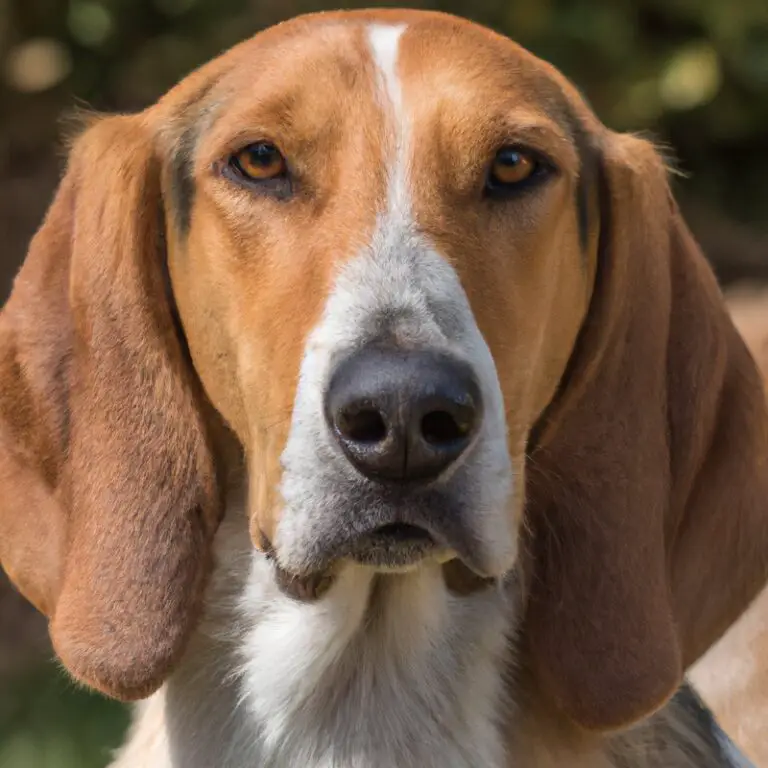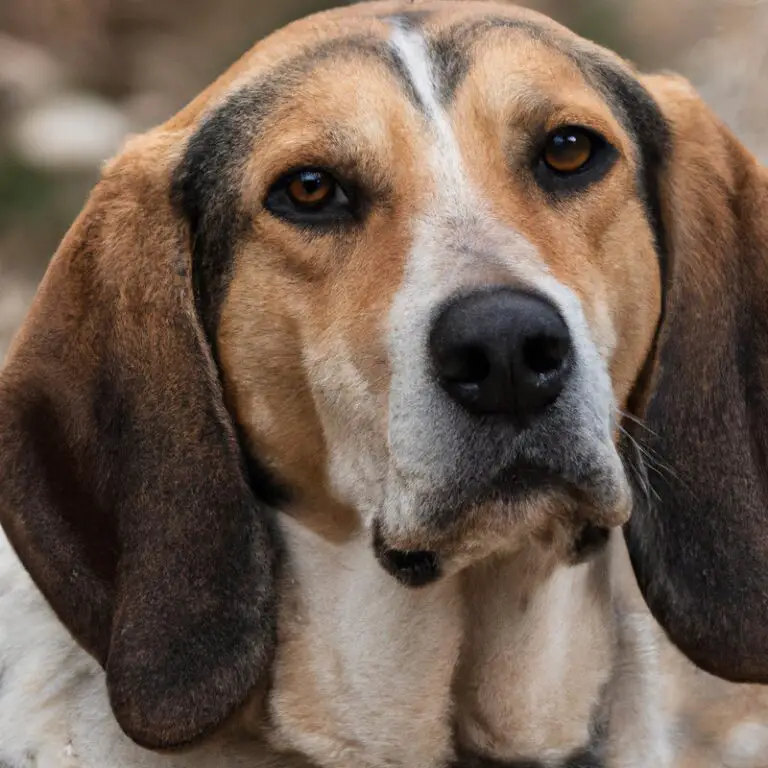What Colors Are Typical For English Foxhounds?
Key Takeaways:
- English Foxhounds are typically tricolored, with a combination of black, white, and tan markings.
- The most common color pattern for English Foxhounds is known as the “blanket” pattern, where the black coloration forms a blanket-like pattern over the body.
- While tricolor is the most common, English Foxhounds can also come in bicolor patterns, such as white with tan markings or white with black markings.
- It is rare to find English Foxhounds that are completely solid in color, as they usually have some degree of patterning or markings.
Are you curious about the vibrant palette of colors that adorn the English Foxhound? From the classic tricolor combination of black, white, and tan, to eye-catching bi-color patterns of black and white or red and white, these canines are truly a sight to behold.
But that’s not all! There are also lemon and white, tan and white, and even rare variations like blue and white, red or orange, and liver and white.
In this article, I’ll take you on an exciting journey through the fascinating world of English Foxhound colors, exploring the factors that influence them and answering some burning questions along the way. Get ready to discover the spectrum of beauty that these magnificent dogs possess.
| English Foxhounds | |
|---|---|
| Primary Color | Tri-color (white, black, and tan) |
| Secondary Colors | Black and white, red and white, or any combination of these colors |
| Coat Patterns | Ticking or freckling on the white areas, often with a saddle marking on the back |
Typical colors of English Foxhounds
Predominant color: Tricolor (Black, White, and Tan)
English Foxhounds are typically tricolor, meaning they have a combination of three colors: black, white, and tan.
This color pattern is the predominant one for this breed.
The black and tan markings are usually found on the face, ears, and saddle area, while the majority of their body is white.
The tricolor coloration gives English Foxhounds a distinctive and eye-catching appearance.

Other common colors seen in English Foxhounds
English Foxhounds can come in a variety of colors, beyond the typical tricolor pattern. Some common colors seen in English Foxhounds include:
- Black and tan: These dogs have a black base coat with tan markings on their face, chest, and legs.
- Lemon and white: This color combination features a light lemon or cream base coat with white markings.
- Red and white: These Foxhounds have a reddish coat with white markings.
- Tan and white: Similar to black and tan, these dogs have a base coat that is tan, with white markings.
- Blue and white: This coloration consists of a bluish-gray coat with white markings.
These are just a few examples of the other common colors seen in English Foxhounds. Their varied colors add to their unique charm and personality.

Bi-color patterns: Black and White, Red and White
Bi-color patterns are common among English Foxhounds, with black and white being a popular combination.
These dogs have a base coat of white with patches or spots of black.
Another typical bi-color pattern is red and white, where the base coat is white and the patches or spots are a reddish color.
These patterns give the English Foxhounds a distinctive and striking appearance.
Lemon and White English Foxhounds
Lemon and White English Foxhounds are a specific color variation of the English Foxhound breed.
These dogs have a distinctive coat that is predominantly white with lemon or light tan markings.
The lemon color can range from a pale cream to a deeper shade of yellow.
This color combination is highly desirable in the breed standard and is a defining characteristic of Lemon and White English Foxhounds.
Their coat is short and dense, which makes grooming relatively easy.

Tan and White English Foxhounds
Tan and White English Foxhounds are a common color variation of this breed. These dogs have a base color of tan or cream, with white markings on their face, chest, and paws.
The tan color can vary in shade, but it is usually a warm, earthy tone.
This color combination gives the English Foxhound a distinct and attractive appearance. They are known for their athletic build and energetic nature.
Their coloring also makes them easily recognizable among other breeds, adding to their charm and appeal.
Rare color variations in English Foxhounds
English Foxhounds typically come in traditional colors such as tricolor (black, white, and tan), bicolor (white and tan), or solid colors like white or tan.
However, there are some rare color variations that can occur in English Foxhounds.
These include variations such as liver or chocolate, blue or slate, and even brindle coats.
These unique color variations add to the charm and individuality of the English Foxhound breed.
Blue and White English Foxhounds
Blue and White English Foxhounds are two common color variations found in this breed. Blue English Foxhounds have a predominantly bluish-black coat with tan markings on their face, chest, and legs.
On the other hand, White English Foxhounds have a predominantly white coat with patches of black or ticking.
The blue color in these hounds is a recessive gene and is less common compared to the more traditional tri-color or lemon and white coat patterns. Both color variations are equally beautiful and make these hounds stand out.
Red or Orange English Foxhounds
Red or orange coloring is common among English Foxhounds.
These shades can vary in intensity, from a light ginger to a deep reddish-brown.
The striking coloration adds to the breed’s distinctive appearance.
When it comes to coat patterns, English Foxhounds can have a variety of combinations with their red or orange coloring, including white markings and a “saddle” pattern on the back.
This breed’s vivid hues are sure to catch your eye and make them stand out from the pack.
Liver and White English Foxhounds
Liver and White English Foxhounds have a distinct coat color combination.
The term “liver” refers to a dark brown shade, while “white” represents the lighter areas of their coat.
The liver color can range from deep chocolate to a lighter reddish-brown.
The white areas typically appear on the chest, paws, and tail tip.
This color pattern gives these foxhounds a striking appearance.
Their liver and white coat makes them easily recognizable and adds to their overall charm and beauty.
Understanding coat patterns in English Foxhounds
Understanding coat patterns in English Foxhounds is essential for any dog enthusiast.
English Foxhounds typically have a tricolor coat pattern, consisting of a combination of black, white, and tan markings.
The black usually covers the majority of the body, while white is seen on the head, chest, and legs.
Tan markings can be found above the eyes, on the cheeks, and on the legs.
These distinct coat patterns make English Foxhounds easily recognizable and add to their overall charm.
Factors influencing color variations in English Foxhounds
Genetics and breeding considerations
Genetics and breeding are significant factors influencing color variations in English Foxhounds.
Breeders carefully select parent dogs with desirable coat colors to produce offspring with consistent colors.
By considering the genetics behind color inheritance, breeders can predict what colors puppies are likely to have.
Factors such as dominant and recessive genes, as well as the presence of certain pigmentation genes, play a role in determining coat color.
By making informed breeding decisions based on these considerations, breeders can maintain the desired color traits in English Foxhounds.
Influence of crossbreeding on color patterns
Crossbreeding can have a significant impact on the color patterns of English Foxhounds. When different breeds are mixed, it can result in a wider range of colors and patterns in the offspring.
For example, if a Foxhound is crossed with a breed known for a different coat color, such as a Beagle, the resulting puppies may display a combination of the two breeds’ coat colors.
Crossbreeding can introduce new color variations and make it more challenging to predict the exact colors and patterns in English Foxhounds.
Role of selective breeding in maintaining color standards
Selective breeding plays a crucial role in maintaining color standards for English Foxhounds. Breeders carefully choose parent dogs with desired coat colors to produce offspring that meet the breed’s color requirements.
This process helps ensure that consistent and predictable colors are passed down through generations.
Through intentional breeding, breeders can maintain and improve the specific coat colors and patterns that are characteristic of English Foxhounds. It is a key factor in preserving the breed’s aesthetic appeal and breed standard.
Frequently Asked Questions (FAQs) about English Foxhound colors
Can English Foxhounds have solid colors?
Yes, English Foxhounds can have solid colors. Solid-colored English Foxhounds are quite common and recognized as a valid color pattern for the breed.
Some of the solid colors you may come across include black, liver, tan, and white.
This means that you can find English Foxhounds in various solid color combinations. So, if you prefer a solid-colored English Foxhound, you can definitely find one that suits your preference.
Are there any specific color patterns for show-quality English Foxhounds?
Show-quality English Foxhounds typically have a tricolor coat pattern, consisting of a combination of black, white, and tan markings. This pattern is considered traditional and desirable for the breed.
However, it’s important to note that color patterns alone do not determine a dog’s show quality.
Other factors, such as structure, movement, and temperament, also play a significant role in determining a dog’s show worthiness. Show-quality English Foxhounds can come in variations of the tricolor pattern, but the tricolor coat is the most common and preferred in the show ring.
Do color patterns affect temperament or behavior in English Foxhounds?
Color patterns do not have a direct impact on the temperament or behavior of English Foxhounds. The breed is known for its friendly and sociable nature, regardless of their coat color.
Whether they have a tricolor, bicolor, or solid color pattern, English Foxhounds typically display similar traits such as being good-natured, lively, and eager to please.
Their behavior is influenced more by individual genetics, socialization, and training rather than their coat color.
Are certain color patterns more popular or preferred in English Foxhounds?
Certain color patterns are indeed more popular and preferred in English Foxhounds.
The most common color patterns include tricolor (black, white, and tan), bicolor (usually black and white), and tricolor with a predominant color.
These patterns are highly sought after among enthusiasts and breeders.
However, it’s important to note that the preference for color patterns may vary among individual breeders or owners.
Ultimately, the color patterns should not overshadow the dog’s health, temperament, and overall breed standards.
Final Verdict
The typical colors of English Foxhounds are predominantly tricolor, with black, white, and tan being the most common combination.
However, other colors such as bi-color patterns (black and white, red and white), lemon and white, tan and white, and rare variations like blue and white, red or orange, and liver and white can also be seen.
These color variations are influenced by genetics, breeding considerations, and the role of selective breeding.
While color patterns may not affect temperament or behavior, certain patterns may be more popular or preferred in the English Foxhound community.
Overall, English Foxhounds exhibit a beautiful array of colors that add to their charm and uniqueness.







